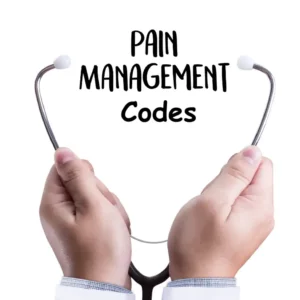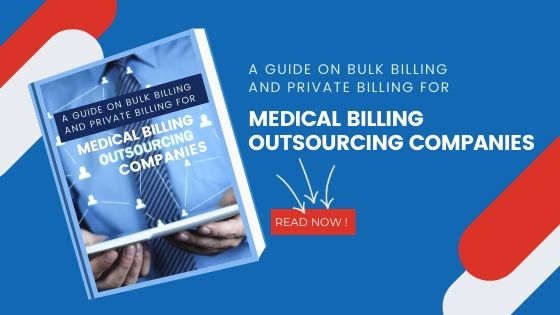American Academy of Pain Medicine had stated that millions of people within the United States suffer from acute or chronic pain that has become a public health problem costing billions of dollars each year. Pain management billing is increasingly getting challenging in recent years, especially after the implementation of ICD-10. Becker’s Hospital Review had produced a special report on the challenges faced in pain management billing.
Related: Recent Pain Management Codes Updates
When several patients have been consulting healthcare professionals due to pain, there is sufficient and significant room for pain management practices. Therefore, the business and revenue growth is not disturbed either. However, over the past few years, new state and federal regulations have brought some unique challenges that affect pain management practices.
This article explains pain management billing and the challenges confronted.
Pain Management Billing & Revenue Enhancement:
- Alright! Your ultimate goal is to get your patients to be as pain-free as possible, and that’s considered a noble pursuit.
- Beyond patient responsibility, getting timely reimbursements is exceptionally essential. But, that itself is an exciting premise.
- What if insurance companies had paid you the minimum amount for the claims attached? Would you consider it as being paid?
- Of course, you must! But, what if those claims were coded differently for better reimbursement without over-coding issues? The payment would have come, but with significantly increased revenue.
- So, just being paid isn’t enough. Getting paid as much as possible is a bonanza.
- Your RCM system should have a built-in rule engine to ensure maximized claims value because insurance companies will never suggest different coding so they can pay you more.
Claim Cleanly for the First Time:
- Claims at their maximized value are increasingly robust when submitted with a nearly 100% success rate on first-time clearinghouse transmissions.
- So, when your HFCA, UB, WC, and NF claims are submitted, you are not only guaranteed most of the revenue possible, but also you’ll get it as quickly as possible.
Protecting the Revenue in Advance:
- Before claim submission, you should importantly know the coverage effect. The RCM system must be able to process batch eligibility verification several times in advance of appointments.
- Pre-appointment alerts are necessary if providers aren’t in-network with patients’ insurance companies.
- Apparently, in pain management billing, when scheduling at any time before the appointment, you will have to access a patient responsibility estimator. It is a powerful feature for capturing ever-increasing patient balances due.
- With this valuable information, healthcare professionals must engage patients as to approximately what they’ll owe and begin the conversation on getting paid now, either in whole or at least partially.
Challenges faced in Pain Management Billing:
Prior Authorization:
- Several insurance companies require healthcare professionals to get prior authorizations before providing specific pain management treatments. They approve the service when there’s a medical necessity or proof that more conservative treatments haven’t worked.
- It also includes the necessity for prior authorization on many pain medications.
Limits on Procedures:
- Often, healthcare professionals can only perform specific procedures a certain number of times.
Post-Service Prepayment Coding Reviews:
- Post-service prepayment coding reviews may occur by holding up payments for as long as 180 days if claims have been flagged for further consideration.
- This phenomenon makes it difficult to keep the revenue cycle and revenue moving in pain management billing.
Controlling Certain Drug Combination Prescriptions:
- While prescribing certain complex medications or combinations of drugs, healthcare professionals will have to submit proof stating that the treatment is required and a particular combination is proven to be suitable for the patient.
No Reimbursements for Few Therapies:
- Some alternative non-pharmacologic treatments are recommended by the CDC and other organizations to treat pain. But some payers may not reimburse them.
Insurance companies are also overwhelmed:
- The vast number of pain management billing claims and the time required to review them to ensure they’re meeting new guidelines also makes it overwhelming for insurance companies.
- In few cases, insurance companies are having beneficiary advisory companies that deal with their approvals.
Growing Pain Medication Dependency Epidemic:
- The increasing epidemic in patients’ countries becomes dependent on pain medications to fight the pandemic.
- Insurance payers and other healthcare organizations are trying to decrease and resolve the issue.
- Simultaneously, it may result in some healthcare organizations being a target for overprescribing these types of medications.
Strategies to improve Revenue in Pain Management Billing:
- First of all, it’s essential to ensure that the office staff understands the new payer rules and new codes.
- Office staff must update their CPT and ICD-10 codes as there have been several new CPT code revisions, some deletions, and the addition of new pain management codes.
- Medical coding mistakes are one of the biggest reasons that pain management billing practices deal with denials, so ensure all staff members are current and keen on the latest codes and rules.
Cater to a Varied Patient Population:
- Though you require ensuring that you’re catering to Medicaid and Medicare populations at your pain management billing practice, catering to varied patient populations helps you grow your practice.
- It means that you are ready to grow your practice to accept patients who have workers’ comp insurance and commercial insurance.
- Most of the pain procedures can set a significant amount of revenue for your practice. If it’s a varied patient population, it aids your practice to stay competitive while fueling growth and increased revenue.
Understand the Cost of Complex Procedures:
- Pain management practice requires understanding and managing the cost of complex procedures that weighs the reimbursements you’ll receive will justify the costs of specific procedures.
- Beware of the cost of the procedures that might vary depending on their performance in surgery centers or a pain clinic.
Ensure that Documentation is Complete and Accurate:
- Missing documentation is one of the main reasons for pain management to get denied or rejected.
- So, it’s very vital to make sure that documentation is accurate and complete before you send claims to payers or insurance companies.
- Accurate patient records, including patient visits, must be updated accordingly to avoid issues with insurance companies.
Understanding pain management billing is critical. Billing accuracy develops right from the way you understand the billing process. Experts in RCM companies can ease your work with less tension and effort. Try looking for the best one that suits your business.
For more articles related to healthcare, please subscribe to our blog. For any queries and suggestions, please comment down below. We are social! Follow us on Facebook, Instagram, LinkedIn and Twitter for daily updates.




